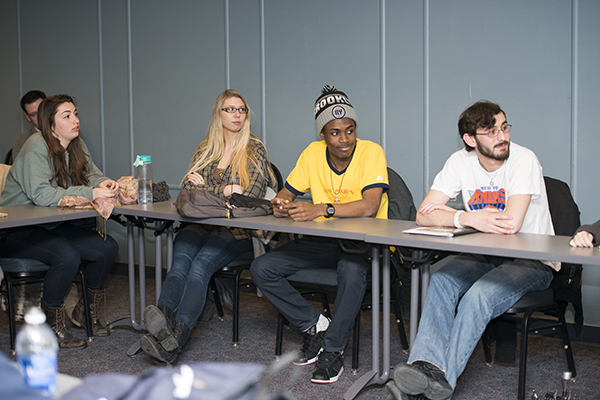

At the senate meeting on Feb. 26, Director of Student Activities and Union Services Mike Patterson announced that the Student Association (SA) had reached its maximum budget for allowed activity fees.
However, a new allowance has been given from SUNY, so SA can now change their activity fee from $200 per year to $250.
Patterson said if SA is going to try to raise the fee, they need to make sure they have a clear idea of what the new funds will go toward. He also said if it’s going to be raised, it should only be an amount they believe will make an improvement, not just a set number for the sake of it.
“My concern is not so much so if it goes up or go down, but that they’re doing it in an ethical and informed way, and that they’re doing it thoughtfully,” Patterson said. “They also have to, between now and elections in May, hammer out the numbers and figure out what that change of service is.”
Vice President of Academic Affairs adn Governance Jordan Taylor said the activity fee makes up the entirety of the $1.4 million of SA’s budget. He said all of the money goes back to the student body through the loop service, conference funds, general programming, clubs, legal services and paying the SA E-board.
Taylor said raising the activity fee by $5 per semester would increase SA’s budget by approximately $76,000 per semester. With the increase he said SA could provide more services, such as having the Loop bus run on weekends, the Child Care Center and Student Association Productions could get a better artist to put on a better show.
There’s currently excess money in the club’s budget, so any new possible money won’t go to clubs, Taylor said.
Patterson said every two years when the student body votes on the activity fee, 10 percent of the student body needs to participate, and the majority vote will win.
Taylor said when SA puts the vote up on my.newpaltz.edu, whether it’s leaving the fee the same, or raising it $5 or $10, they will show students what SA does with the money and where the new money would go.
While there has been discussion of raising the activity fee by $5 per semester, Taylor said he believes it should be raised $10 per semester.
“All the money goes back to the students, so I would be for a $10 raise, but we’re putting $5 to see how people feel about it,” Taylor said. “We might put $10 to see how people feel about it, but in the end, the student body has to choose. We don’t decide.”
Patterson said if students don’t want the activity fee to increase then those students need to make their voices heard.
“Here’s student government at its best,” Patterson said. “If you don’t like what you’re hearing, talk to a senator. Reach out to them and say, ‘regardless of what services are being talked about, the value isn’t here and I want you to know as a student I don’t want you to vote in favor of that.’”
Taylor said during the election process that SA also has to advertise the activity fee and that students need to vote to keep the activity fee at its current level or the increased one, otherwise the school won’t have an activity fee.
Prior to putting the activity fee up to vote, Patterson said he recommends that the SA compare and analyze where other comparable schools spend their activity fee compared to where schools in the SUNY system spend their activity. This is to see where SA inflated on spending and to see what areas other campuses are spending money on that we’re not.
Currently, Taylor said SA is looking to create a survey to see where students would like to see the additional money go if it gets approved.
Overall, Tayor said if students are against raising the fee, he hopes they ultimately realize it will better the New Paltz community.
“I guess you can think beyond yourself and think about how the community as a whole benefits from raising it because that person has the same access as everyone else to those funds,” Taylor said. “It’s a question of whether you put the individual or the community first.”
